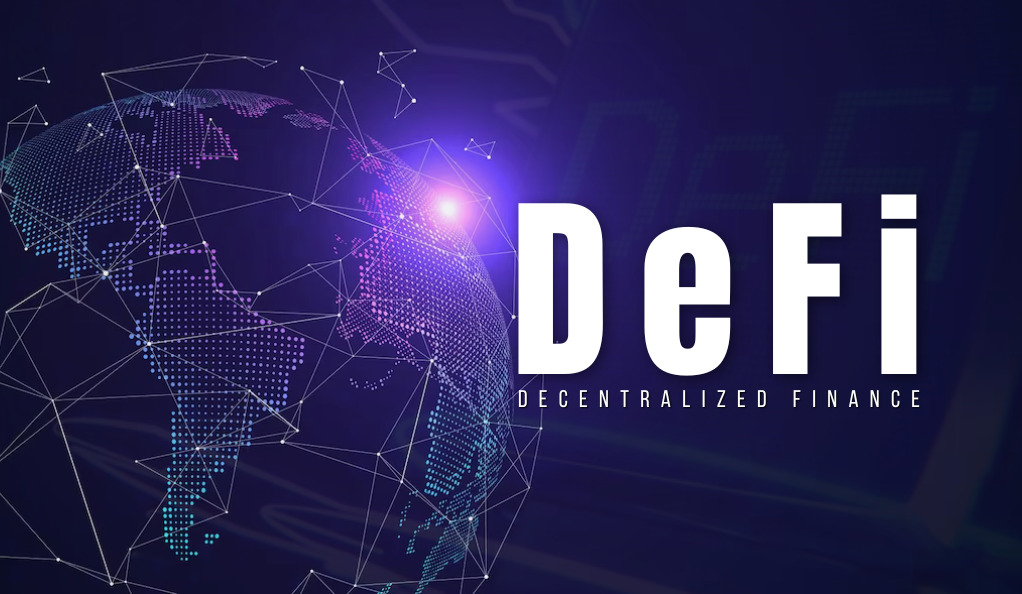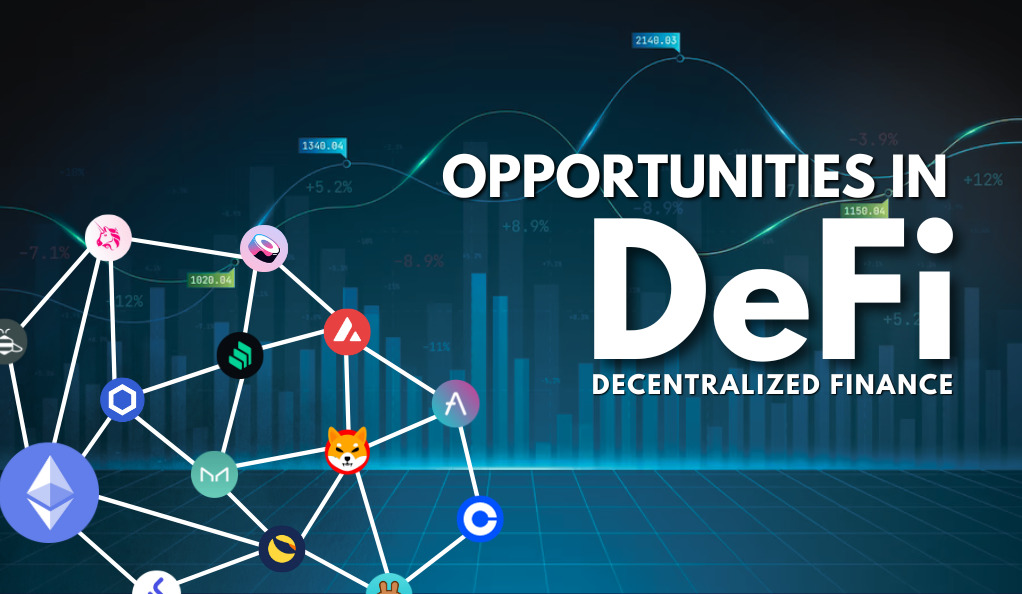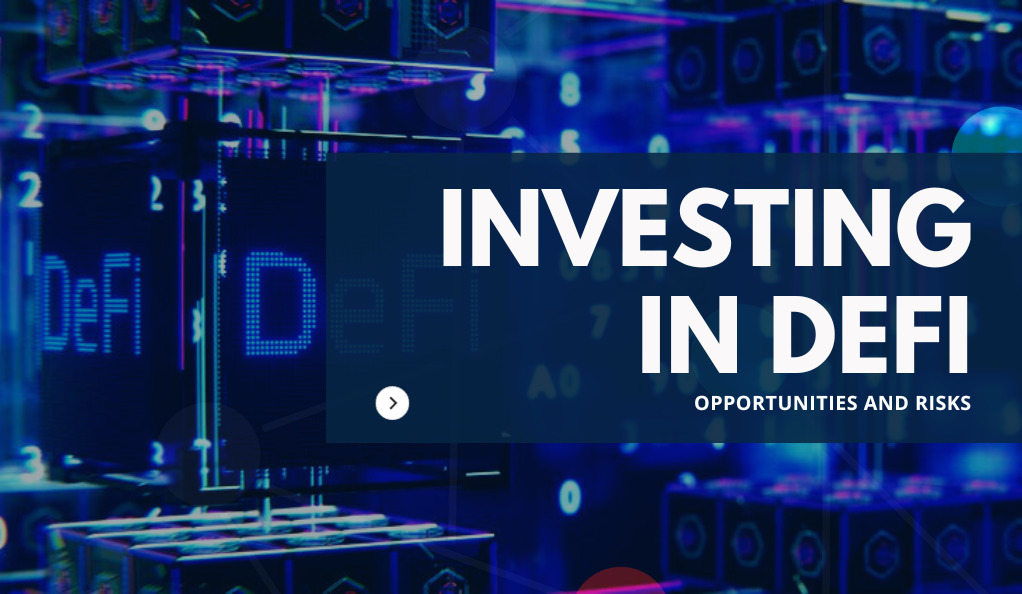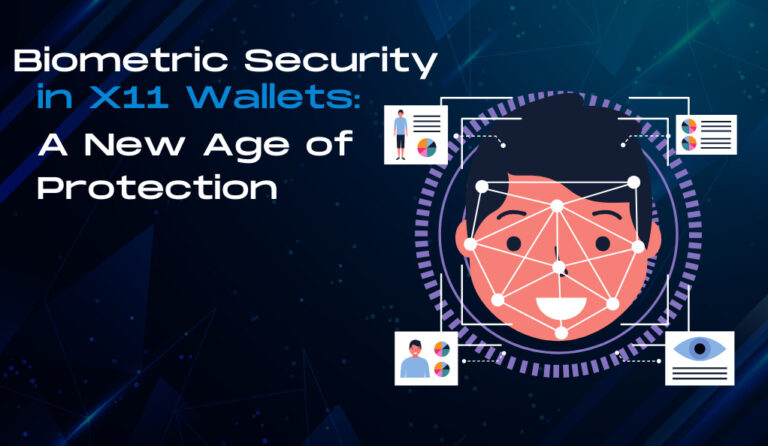Decentralized Finance, commonly known as DeFi, is a revolutionary concept that has taken the financial world by storm. It promises to democratize finance by eliminating intermediaries, offering greater financial inclusion, and providing a transparent and open financial system. But what exactly is DeFi, and why is it causing such a buzz in the financial sector?
The Evolution of Finance
To understand DeFi, it’s essential to first grasp the evolution of the financial system. Traditional finance, often referred to as “TradFi,” relies heavily on intermediaries such as banks, brokers, and other financial institutions. These entities facilitate transactions, offer financial products, and generally act as the gatekeepers of the financial world.
| Traditional Finance (TradFi) | Decentralized Finance (DeFi) |
|---|---|
| Centralized institutions | Decentralized platforms |
| Requires intermediaries | Peer-to-peer transactions |
| Limited transparency | Full transparency |
| Access barriers | Open to anyone with internet |
| Slower transaction times | Faster, real-time transactions |
The Rise of Blockchain and DeFi
The advent of blockchain technology, the underlying technology behind cryptocurrencies like Bitcoin, paved the way for DeFi. Blockchain is a decentralized ledger that records transactions across multiple computers, ensuring transparency and security. DeFi leverages this technology to create financial tools and services that operate without traditional intermediaries.
Core Principles of DeFi
DeFi operates on a few core principles:
- Permissionless: Anyone, regardless of their financial status or location, can access DeFi platforms and services.
- Transparency: All transactions are recorded on a public ledger, ensuring complete transparency.
- Censorship-resistant: Transactions on DeFi platforms cannot be stopped or altered by any entity.
- Interoperability: DeFi applications are built on open standards and can easily integrate with other DeFi products.
Why DeFi Matters
DeFi’s significance lies in its potential to democratize finance. By eliminating intermediaries, DeFi can offer financial services at a fraction of the cost, making them accessible to a broader audience. Moreover, its transparent nature builds trust among users, and its decentralized nature ensures that no single entity has control over the entire system.
What Exactly Is DeFi?

Decentralized Finance, or DeFi, might sound like a complex term, but its essence is straightforward. It’s a financial system built on blockchain technology, aiming to recreate and improve upon traditional financial systems but without centralized authorities.
Breaking Down DeFi
At its core, DeFi is about democratizing access to financial services. Here’s a breakdown:
- Decentralized: Unlike traditional systems where a central authority governs operations, DeFi systems run on a network of computers, ensuring no single point of control or failure.
- Open Source: Most DeFi applications are open source, meaning their code is publicly available. This transparency allows anyone to audit, verify, and propose improvements to the system.
- Blockchain-Based: DeFi applications run on blockchain technology, ensuring transactions are secure, transparent, and immutable.
Components of DeFi
DeFi isn’t just about cryptocurrencies or tokens; it encompasses a wide range of financial activities:
- Lending and Borrowing: Platforms like Compound and Aave allow users to lend or borrow funds without intermediaries, earning interest or leveraging assets.
- Decentralized Exchanges (DEXs): Platforms like Uniswap or Sushiswap enable users to trade cryptocurrencies without a central authority, reducing the risk of hacks and providing more privacy.
- Stablecoins: Cryptocurrencies like USDC or DAI are pegged to stable assets like the US dollar, providing the benefits of digital currencies without the typical volatility.
- Insurance: Platforms like Nexus Mutual offer decentralized insurance, allowing users to get coverage against risks in the DeFi space.
- Derivatives: Platforms like Synthetix allow users to create and trade derivatives based on real-world assets, expanding the range of financial products available in the DeFi space.
Smart Contracts: The Backbone of DeFi
At the heart of every DeFi application is a smart contract. These are self-executing contracts with the terms of the agreement directly written into code. They automatically enforce and execute the terms of a contract when certain conditions are met, reducing the need for intermediaries and ensuring trust in the system.
For instance, in a DeFi lending platform, a smart contract might automatically release funds to a borrower once they provide sufficient collateral. Similarly, it might automatically liquidate assets if the value falls below a certain threshold.
The Potential of DeFi
The true potential of DeFi lies in its ability to provide financial services to those traditionally excluded from the financial system. With just an internet connection, anyone can access a plethora of financial services, from earning interest to trading derivatives. This democratization can drive financial inclusion, especially in regions with limited banking infrastructure.
DeFi Use Cases
The versatility of DeFi is evident in its wide range of applications. From lending platforms to prediction markets, DeFi is reshaping the financial landscape, offering innovative solutions to age-old challenges. Let’s explore some of the most prominent use cases.
1. Decentralized Borrowing and Lending
Platforms like Compound and Aave have revolutionized the lending and borrowing landscape. Unlike traditional banks, these platforms allow users to earn interest on their deposits or borrow assets without cumbersome paperwork or intermediaries.
- Benefits:
- Instant Transactions: Borrow or lend in real-time without waiting for approvals.
- Collateralized Loans: Borrowers provide crypto assets as collateral, ensuring security for lenders.
- Flexible Interest Rates: Rates are often determined algorithmically based on supply and demand.
2. Decentralized Exchanges (DEXs)
DEXs like Uniswap and Balancer offer a platform for users to trade cryptocurrencies directly, without relying on a centralized entity. This ensures more security, privacy, and control over one’s assets.
- Benefits:
- Reduced Risk: No central point of failure, reducing the risk of hacks.
- Liquidity Pools: Users can provide liquidity and earn fees, incentivizing participation.
- Direct Trades: Peer-to-peer trades without intermediaries ensure better rates.
3. Stablecoins
Stablecoins like USDC, DAI, and Tether are designed to maintain a stable value, typically pegged to a currency like the US dollar. They offer the benefits of cryptocurrencies without the volatility.
- Benefits:
- Price Stability: Reduced volatility compared to other cryptocurrencies.
- Fast Transactions: Quick and global transactions at a fraction of traditional banking costs.
- Transparency: On-chain verification ensures the legitimacy of the stablecoin’s reserves.
4. Yield Farming and Liquidity Mining
Users can deposit or “stake” their assets in a DeFi protocol to earn rewards. This process, known as yield farming or liquidity mining, incentivizes users to provide liquidity to the platform.
- Benefits:
- Passive Income: Earn rewards or interest on staked assets.
- Incentivized Participation: Platforms offer lucrative rewards to attract liquidity.
- Diverse Opportunities: Multiple platforms and strategies to choose from, catering to different risk profiles.
5. Prediction Markets
Platforms like Augur and Gnosis allow users to bet on the outcome of future events, from election results to weather forecasts. These decentralized prediction markets aggregate user predictions to generate a consensus forecast.
- Benefits:
- Crowdsourced Wisdom: Harness the collective intelligence of the masses.
- Decentralized and Transparent: No central authority can manipulate or control the market.
- Diverse Markets: Users can create markets for almost any imaginable event.
Opportunities in DeFi

The rise of DeFi has ushered in a new era of financial innovation, presenting a myriad of opportunities for both individual investors and businesses. As traditional financial systems grapple with inefficiencies and exclusivity, DeFi stands out as a beacon of hope for a more inclusive and efficient financial future. Let’s delve into the myriad opportunities that DeFi presents.
1. Global Market Access
One of the most significant advantages of DeFi is its universal accessibility.
- Borderless Transactions: DeFi platforms operate globally, allowing users from different parts of the world to interact without restrictions.
- Inclusivity: Even those without access to traditional banking systems can participate, fostering financial inclusion.
2. Financial Empowerment and Autonomy
DeFi returns financial control to the individual.
- Self-Custody: Users have full control over their assets, reducing reliance on intermediaries.
- Personalized Financial Strategies: With a plethora of DeFi tools and platforms, users can tailor their financial strategies to their unique needs and risk profiles.
3. Innovation and Diversification
The DeFi ecosystem is a hotbed for financial innovation.
- New Financial Instruments: From flash loans to synthetic assets, DeFi is continuously introducing novel financial products.
- Portfolio Diversification: Investors can diversify their portfolios by exploring various DeFi platforms and assets.
4. Enhanced Yield Opportunities
Traditional savings accounts offer meager interest rates. In contrast, DeFi platforms provide lucrative yield opportunities.
- Yield Farming: Stake assets in liquidity pools or protocols to earn rewards.
- Staking: Participate in network consensus and earn staking rewards.
5. Transparency and Security
Blockchain, the underlying technology of DeFi, ensures unparalleled transparency and security.
- Open-Source Protocols: Many DeFi projects are open-source, allowing for community scrutiny and improvements.
- Immutable Transactions: Once recorded on the blockchain, transactions cannot be altered, ensuring trust and security.
6. Cost Efficiency
By eliminating intermediaries, DeFi can significantly reduce transaction costs.
- Peer-to-Peer Transactions: Direct transactions between parties reduce fees.
- Automated Processes: Smart contracts automate many processes, further reducing costs.
7. Programmable Finance
The integration of smart contracts allows for the creation of complex financial instruments and strategies.
- Customized Smart Contracts: Tailor financial agreements to specific needs.
- Automated Financial Strategies: Implement strategies that automatically adjust based on predefined criteria or market conditions.
Risks Associated with DeFi

While the opportunities in DeFi are vast and transformative, it’s essential to approach this burgeoning sector with a balanced perspective. Like any financial system, DeFi is not without its challenges and risks. Understanding these risks is crucial for anyone looking to navigate the DeFi landscape safely and effectively.
1. Smart Contract Vulnerabilities
At the heart of DeFi are smart contracts, and while they automate and enforce agreements, they’re not infallible.
- Bugs and Exploits: A poorly written smart contract can have vulnerabilities that malicious actors can exploit.
- Immutable Yet Flawed: Once deployed, smart contracts can’t be altered, meaning any inherent flaw remains unless there’s a mechanism for upgrades.
2. Liquidity Risks
Liquidity is the lifeblood of many DeFi platforms, especially exchanges.
- Liquidity Crunch: If too many users withdraw their funds simultaneously, it can create a liquidity shortage.
- Impermanent Loss: In automated market makers, liquidity providers can face losses if the price of their staked assets changes significantly.
3. Regulatory Uncertainties
The decentralized nature of DeFi poses challenges for regulators.
- Regulatory Crackdown: Governments might impose regulations that could affect the operation or legality of some DeFi platforms.
- Compliance Issues: DeFi platforms might have to adapt to meet new regulatory standards, impacting their functionality.
4. Platform Risks
Not all DeFi platforms are created equal.
- Rug Pulls: Malicious project founders might drain the funds from a platform, leaving users with significant losses.
- Platform Abandonment: Developers might abandon a project due to various reasons, leaving the platform unsupported.
5. Market Risks
The DeFi market, like any other, is subject to volatility.
- Price Volatility: The value of assets within the DeFi space can be highly volatile, leading to potential losses.
- Economic Attacks: Sophisticated actors might manipulate the market or employ strategies to destabilize specific DeFi platforms.
6. User Errors
The onus of responsibility in DeFi often lies with the user.
- Lost Private Keys: Losing access to one’s private keys means losing access to funds stored in DeFi platforms.
- Incorrect Transactions: Mistakenly sending funds to the wrong address can result in irreversible losses.
7. Interoperability Issues
DeFi platforms often operate on different blockchains, which can pose challenges.
- Cross-Chain Complexities: Moving assets between different blockchains can be complex and risky.
- Integration Failures: Platforms relying on multiple integrations might face issues if one integration fails or is compromised.
CBDCs vs. DeFi

As the world of decentralized finance (DeFi) continues to expand, another significant development in the financial sector is gaining traction: Central Bank Digital Currencies (CBDCs). These are digital currencies issued by central banks, representing a new form of sovereign money. The interplay between CBDCs and DeFi is a topic of intense discussion and speculation. Let’s delve into their dynamics.
1. Understanding Central Bank Digital Currencies (CBDCs)
CBDCs are digital versions of a country’s national currency and are backed by the state’s reserves.
- Centralized Nature: Unlike most cryptocurrencies, CBDCs are centralized and regulated by the country’s central bank.
- Digital Sovereign Money: They represent a digital form of the country’s sovereign currency, ensuring stability and trust.
2. Potential Advantages of CBDCs
CBDCs come with several potential benefits:
- Efficiency: Faster and cheaper transactions, especially for cross-border payments.
- Financial Inclusion: Can provide banking solutions to the unbanked population.
- Transparency and Security: Leveraging blockchain technology can offer enhanced security and transparency.
3. Challenges CBDCs Pose to DeFi
While CBDCs and DeFi both leverage blockchain technology, their coexistence might pose challenges:
- Regulatory Oversight: The introduction of CBDCs might come with stringent regulations that could impact DeFi platforms.
- Competition: CBDCs might offer similar services as DeFi platforms, leading to competition.
- Centralization vs. Decentralization: The centralized nature of CBDCs goes against the ethos of DeFi, potentially leading to ideological clashes.
4. Synergies between CBDCs and DeFi
Despite potential challenges, there are areas where CBDCs and DeFi can complement each other:
- Infrastructure: CBDCs can leverage the established infrastructure of DeFi platforms for distribution and integration.
- Innovation: DeFi platforms can integrate CBDCs to offer new financial products and services.
- Liquidity: CBDCs can provide additional liquidity to DeFi platforms, enhancing their stability and functionality.
5. The Future Interplay
The relationship between CBDCs and DeFi is still unfolding, and several scenarios could play out:
- Coexistence: CBDCs and DeFi platforms operate side by side, serving different segments of the market.
- Integration: DeFi platforms integrate CBDCs, leading to a hybrid model of decentralized finance.
- Competition: CBDCs and DeFi platforms compete head-to-head for market dominance.
Conclusion: Navigating the Future of Finance
The financial landscape is undergoing a seismic shift with the rise of DeFi and the emergence of CBDCs, challenging traditional paradigms. Embracing this change, understanding the power of decentralization, and balancing innovation with regulation are pivotal. As decentralized platforms democratize access and foster innovation, collaboration between the DeFi community and regulators will be essential for harmonious growth.
Meanwhile, education remains a cornerstone, empowering users to navigate this new terrain safely. The future of finance, blending centralized and decentralized elements, promises a more inclusive, transparent, and innovative era, emphasizing not just technology but the broader vision of a globally connected and empowered community.
At axerunners.com, our goal is to furnish well-rounded and trustworthy information regarding cryptocurrency, finance, trading, and stocks. Nonetheless, we avoid providing financial advice and instead encourage users to conduct their own research and meticulous verification.
Read More











